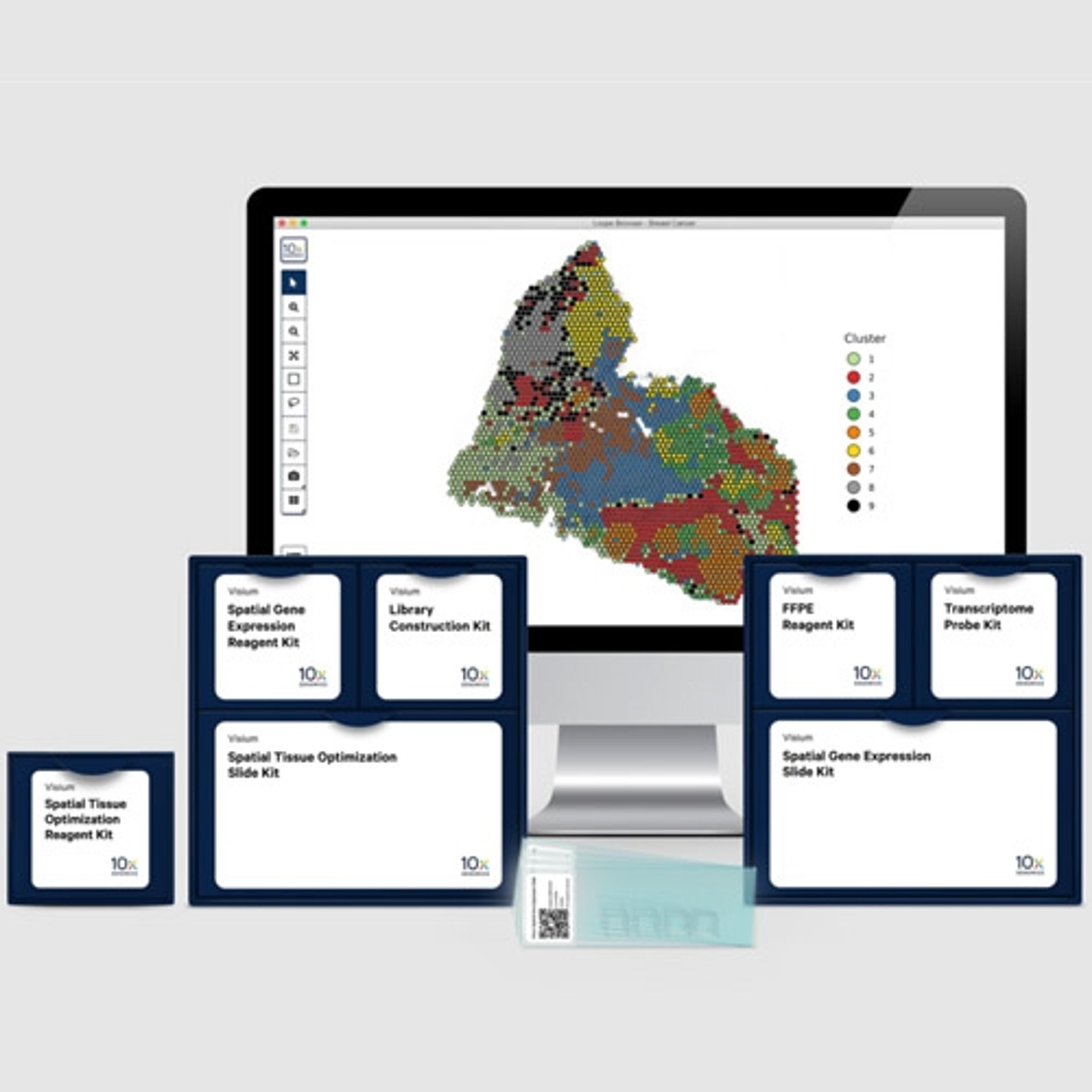Accelerating drug discovery and development with single-cell and spatial profiling
Watch this on-demand webinar to discover how technology from 10x Genomics can help you enhance your single-cell and spatial assays
21 Jan 2023

Most potential drugs fail clinical trials and discovering effective cancer therapies is particularly challenging due to the inherent heterogeneity of the disease. Resolving this biological complexity is key to fundamentally altering our understanding of cancer and requires the detailed molecular insight provided by methods with single cell or spatial resolution.
In this SelectScience webinar, now available on demand, Dr. Suma Jaini, science and technology advisor at 10x Genomics, discusses how researchers from pharma and biotech companies and translational labs are leveraging 10x Genomics technologies throughout the drug discovery process to accelerate mechanistic understanding and reduce risk.
Watch on demandRegister now to watch the webinar on demand, and read on for highlights from the Q&A discussion
Can you do single cell analysis on Formalin-Fixed Paraffin-Embedded tissue (FFPE) samples?
SJ: Currently we can do single cell analysis from live cell lines, cryopreserved samples, or freshly disassociated cells from tumors or any other tissue types. We are currently working on a fixed RNA profiling solution, where our fixation buffers will allow you to fix the dissociated cells or fresh tissue using paraformaldehyde. This is slightly different from how FFPE samples are embedded and prepared, so at this point, we do not support single cell analysis from FFPE samples.
How does Visium for FFPE assay perform on degraded samples? Is there a quality control cutoff?
SJ: Our recommendation is typically to extract RNA from a few sections of the FFPE tissue block, and proceed with those samples that have DV200, which is the fraction of RNA molecules that are greater than 200 base pairs. We recommend using samples that have greater than 50% DV200. That's not to say that you cannot analyze FFPE samples with lower than 50% of DV200 however, you may see the sensitivity in terms of the number of genes detected compromised a little bit.
Can we profile only proteins from single cells without having to do gene expression? And, how many proteins can we profile in one experiment?
SJ: Yes, you can certainly profile only proteins in the single cell experiment. You may have to generate a cDNA library and choose not to proceed with gene expression, library construction, and sequencing. Having said that, it is important to choose the proteins that cover all the cell types that you would expect in the sample. If there are no proteins towards a particular cell type in your samples, then you won't be able to see that cell type during clustering analysis. So, with a good protein panel, you can certainly do protein-only analysis without gene expression.
How is mutated gene recovery possible?
SJ: The mutations can be captured using the single cell gene expression. But one thing that you must remember is, in these assays, you are capturing either the 3’ end of the transcript or the 5’ end of the transcript, depending on which assay you're using. If there is a mutation in the gene that's close to the 3’ end or 5’ end, there is a possibility that you can capture the mutations during your gene expression analysis. There are also other in-house methods where you can do some changes to the 10x assays and detect the mutations if they're present elsewhere in the gene.
If I wanted to conduct RNA sequencing on virus-infected cell lines to see the differential gene expression, is it necessary to use single cell RNA sequencing?
SJ: It depends on the cell line that you are using. If you expect to see any heterogeneity in the cell line, then you should do single cell RNAseq, and see how the virus is affecting the gene expression in different cell types. There are a lot of publications that suggest heterogeneity within a cell line, so it makes sense to do single cell analysis to understand the heterogeneity of the cell line you're using. If there are multiple experimental conditions, then it also makes sense to pull the cells from all the experimental conditions and analyze them at the same time to see how each of the conditions is varying your differential gene expression.
SelectScience runs 10+ webinars a month across various scientific topics, discover more of our upcoming webinars>>

